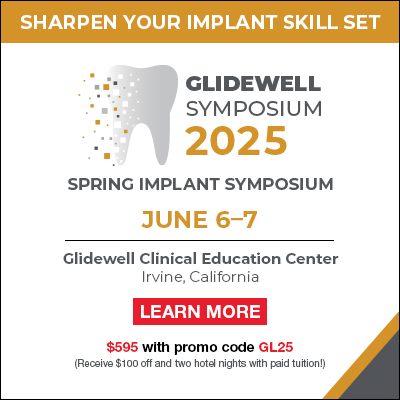The First Cut: A Root Canal and a Lesson in Confidence
Written by: Branden Franzen
The first time I put a bur to a real tooth was for a root canal. I looked calm on the outside, but inside, I was terrified. Discussing the case with my classmates only amplified my nerves. The tooth in question—#24 with a necrotic pulp and a periapical radiolucency—came with its own challenges.
“I heard mandibular anteriors are more likely to have bifurcating canals.”
“Those teeth are so thin; make sure you don’t perf the buccal.”
These warnings played in my head as the day approached. Then, with the rubber dam in place and handpiece in hand, my sweet elderly patient looked up at me and asked, “Branden, have you ever done this before?” My heart dropped.
In my best attempt to be nonchalant, I replied, “Don’t worry, ma’am. I have spent the last two years practicing every day in the sim lab and shadowing in the clinics.” I must have said the right thing because we proceeded smoothly, and the case went exactly as planned. The root canal was completed in one visit, and in that moment, I realized the power of preparation and patient trust.

Expanding My Perspective on Dentistry
Since starting dental school, my understanding of dentistry has evolved in ways I never expected. As a first-year student, I was in awe watching upperclassmen complete Class I composite preps with speed and precision. By my second year, I actively sought out opportunities to shadow more advanced procedures, widening my scope beyond the basics. Now, as a third-year student, I feel like the sky is the limit in general dentistry.
The transition from simulation to patient care has been exhilarating. I approached every sim lab session as if it were a practical exam and every practical exam as if I were working on a real patient. Those two years of refining my skills and improving my efficiency paid off—when the time came to treat live patients, I was eager to apply what I had trained for.
During my first semester in the clinic, I focused on mastering diagnosis and treatment planning, patient management, case acceptance, surgical extractions, and achieving proper contacts in my Class II restorations. Now, in my second semester, I have broadened my scope. I’ve successfully completed molar root canals, same-day onlays, tori removals, fixed partial dentures (FPD), full-mouth extractions, gingival flap surgeries, and implant placements. With each case, my confidence, speed, and clinical judgment have grown.








Patient-Centered Care: The Core of My Philosophy
Beyond hand skills and clinical efficiency, I’ve learned that the true heart of dentistry lies in patient connection. Every patient who sits in my chair deserves the same level of care and attention I would give my own mother, my wife, or myself. This mindset has guided me through challenging cases, tough conversations, and high-pressure moments. It’s easy to get lost in the technical aspects of a procedure, but at the end of the day, dentistry is about people first.
Grand Rounds: A Defining Case in Treatment Planning
One of the most pivotal cases I’ve worked on was for my Grand Rounds presentation. I inherited a patient who had been treatment-planned for a mandibular RPD (removable partial denture) and a bridge on the maxilla. Before proceeding, I asked myself: If my mother or I were in this chair, would this be the treatment I would want?
I sat down with the patient and asked, “Would you prefer something removable, or would you rather have a permanent solution?” The answer was clear—permanence was the goal. After a thorough discussion of bridges, implants, and RPDs, we settled on a plan for three implants while keeping the existing bridge, eliminating the need for any removable prosthetics.
When taking the CBCT for implant placement at sites #19, #30, and #5, we discovered a periapical radiolucency on a previously treated #4. This discovery altered our treatment plan. We paused maxillary implant placement and moved forward with #19 and #30. An endodontic consult revealed a poor prognosis for retreatment of #4, so we extracted it and placed a bone graft with a membrane. During the healing period, we addressed the patient’s other crown needs, which are not all shown in the photos below.
Sites #19 and #30 were uncovered, and restorations are being fabricated at the lab. Meanwhile, sites #4 and #5 have implants integrating, waiting for the next student to uncover and restore. This case reinforced a crucial lesson—great treatment planning isn’t just about following protocol; it’s about seeing the bigger picture and making decisions that will serve the patient for years to come.
BEFORE:


MID-TREATMENT:


AFTER:


Final Thoughts
As I continue refining my skills, I find myself drawn not only to the technical aspects of dentistry but also to the meaningful patient relationships that make this field so fulfilling. Every case, every challenge, and every lesson has reinforced my passion for this profession. While my journey is still unfolding, dental school has already shaped me in ways I never expected.
Join me as I continue my journey into the world of dentistry—learning, growing, and advancing patient care.
Visit my website to follow along: https://brandenfranzendent.wixsite.com/brandenfranzendental.


